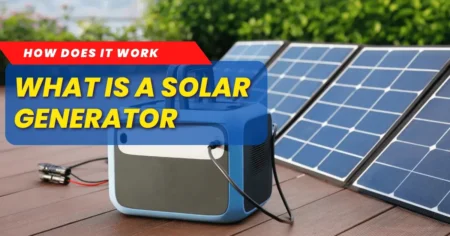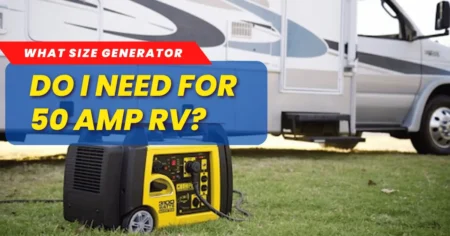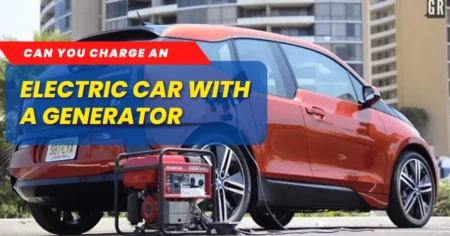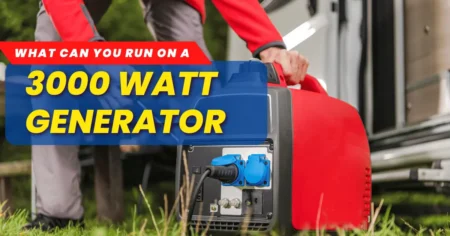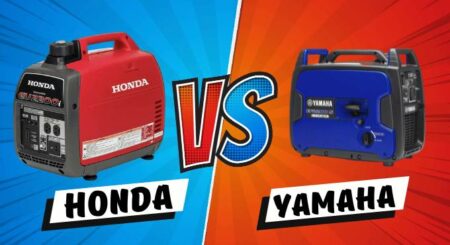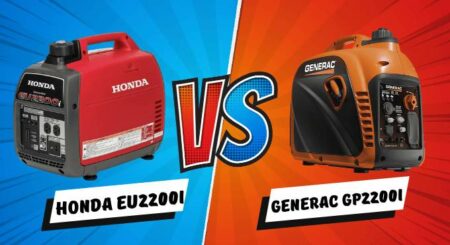Are You looking for How Does a Generator Transfer Switch Work? Any company that employs a generator for backup or standby power needs a transfer switch. Without it, you run the danger of harming the electrical system in your facility, injuring staff members, or creating safety risks for utility workers attempting to restore electricity.
A transfer switch must be installed correctly and matched to the output of your generator and your loads to function successfully. You know that installing a generator is one of the best ways to guarantee that your house or place of business has the backup power you need when you need it most.
However, what about the other things you need to combine it with for best results? A transfer switch is among a generator’s most crucial accessories. Overall safety is improved; this extra equipment makes the backup power procedure smoother.
Here is a quick overview of transfer switches, what they do, and why you should have one.
What Is a Generator Transfer Switch? An Overview
A rising number of homeowners are purchasing backup power generators each year. Generators are convenient for various reasons, including unpredictable weather and unstable utility power supplies.
Even if the grid fails, you can use your essential electrical equipment. Small business owners can still run their companies in the event of a protracted power loss. There are two primary types of backup generators: standby generators and portable generators.
Because portable generators are lightweight and have wheels, they are very portable. Standby generators provide a long-term answer when installed in the proper location and connected to our house’s main breaker panel.
Depending on configuration, Only critical or all electrical loads may be transferred to the generator by the power transfer switch.
How Does a Generator Transfer Switch Work?
All it takes to move the power load between two sources permanently is a transfer switch connected to your power box. This happens automatically in the case of permanent backup power sources when the primary power source fails.
The energy flows smoothly and with the slightest delay, making this perfect. A generator is connected to the transfer switch on the circuit panel when used for whole-house electricity in a domestic setting.
When the transfer switch is activated, The generator load switches from grid electricity to generator power. When one source of electricity isn’t in use, it ensures that others don’t overlap. With the help of the transfer switch, you can switch from the grid to the power generated by your generator during a power outage, allowing you to power appliances and necessary gadgets.
Types of Generator Transfer Switch
There are two types of generator transfer switches including;
1: Manual Switches
Businesses that use a manual transfer switch when the power goes out must turn on the generator, wait for it to stabilize, and then move the building’s electrical demands from the utility grid to the generator.
A high-current switch is used for this. The power transfer process may take several minutes depending on the distance between the generator and the switch and how well everything works. After the electricity is back on, the generator must be turned off manually, and the loads must be switched back to grid power.
2: Automatic Switches
As long as everything functions as intended, organizations with automatic transfer switches find it much simpler to shift loads. The automated transfer switch starts the generator, which detects a loss of electricity.
The building’s loads are switched from the utility grid to the generator by a series of relays after the power stabilizes. Depending on the generator’s and the transfer switch’s quality and settings, this may take a few seconds or less.
Even continuous power supply is possible with specific systems. The automatic transfer switch will bring the loads back into line with the utility grid and then turn off the generator when the power has been restored.
What Type of Generators Require a Transfer Switch?
Households and commercial buildings nearly always require standby generators. It is crucial to have this additional equipment to maintain the power supply without interruption because they are constantly looking for power outages.
Although it’s unnecessary, having a transfer switch for portable generators is usually a good idea. In a domestic context, the main advantage of having a transfer switch is that it allows you to power everything using your circuit breaker panel rather than requiring extension cords.
Hardwired appliances like your ceiling fans, air conditioner, dishwasher, and water heater fall under this category. To start using the portable generator, simply plug it into the transfer switch. Transfer switches are always required for safety and convenience if your generator is more potent than 5,000 watts.
This is crucial to remember since the amount of electricity being produced necessitates the usage of a regulator to prevent surges and grid back feed. While it’s not required in all areas, it’s highly recommended.
Applications of Generator Transfer Switch
A generator transfer switch is usually necessary when a backup generator is utilized to supply electricity during a blackout or other crises. Among them are:
-
For Running Home Appliances
Homes frequently employ a generator transfer switch to supply backup power during blackouts. It ensures that even during a primary power outage, necessities like air conditioners, lights, and refrigerators can keep running.
-
Commercial Usage
Businesses frequently depend on a backup generator to maintain critical activities during blackouts. To save downtime and financial losses, a generator transfer switch ensures that electrical equipment such as computers, lighting, heating, and others can keep running.
-
Industrial Applications
Industrial establishments like factories and warehouses frequently need a backup generator for uninterrupted operation during power outages. By preventing unplanned downtime and lost output, a generator transfer switch helps to guarantee that vital electrical systems and equipment keep operating.
-
Emergency Areas
Other emergency response centers need a steady and dependable power source to deliver vital services during blackouts or other emergencies. These vital facilities need a dependable power supply in case of an emergency, and a generator transfer switch helps achieve that.
When the primary power source is cut off, a generator transfer switch aids in ensuring a smooth and safe power transition in each of these situations. It guarantees that crucial systems and appliances continue functioning during a power outage. It helps prevent the potentially dangerous practice of back-feeding power from the generator to the utility grid.
Why Should You Prefer Using Generator Transfer Switch?
Beyond just being convenient, not employing a transfer switch carries several risks. The absence of a transfer switch may occasionally endanger the health and safety of your loved ones or even electric company employees.
Backfeeding the grid is the primary situation in which this becomes problematic. In other words, if you run your generator without a suitable transfer switch and your main power supply kicks in, your house will be powered by two currents.
Utility personnel may be at risk due to potential issues in the queue caused by this influx. It may also result in fires in your house or place of business. It is for this reason that having a transfer switch is crucial.
To be clear, we refer exclusively to backup generators connected to your home or office’s panel. This is not considered a problem if you use a portable generator and plug a few bulbs or other goods directly into the generator.
How to Choose the Right Type of Generator Transfer Switch?
If your company can afford a brief power outage, an automatic transfer switch is frequently more expensive than a manual one. At the same time, the generator is turned on, and the electricity is transferred over. A transfer switch that operates automatically is ideal if you require quick or continuous power transfers or if you have vital equipment that needs to be powered constantly.
Make sure the one you select has the power ratings you need. To select a switch that will last through a power loss, add the amperage or wattage of all the electrical equipment you need. Size the switch for your anticipated load to allow for a reasonable margin of error.
Final Words
Generally speaking, installing a transfer switch requires permission. On the other hand, a licensed electrician would typically take care of this for you and include the fee in the total installation cost. A generator transfer switch is the mechanism that joins a backup generator to a building’s electrical load. In the case of a power loss, the switch automatically shifts the electrical load from utility power to generator power and back again.
Since it guarantees a smooth and safe transition of power between the generator and utility electricity, the generator transfer switch is a crucial part of a backup generator system. With any luck, this generator transfer switch tutorial will help you grasp all the important details of a transfer switch.







